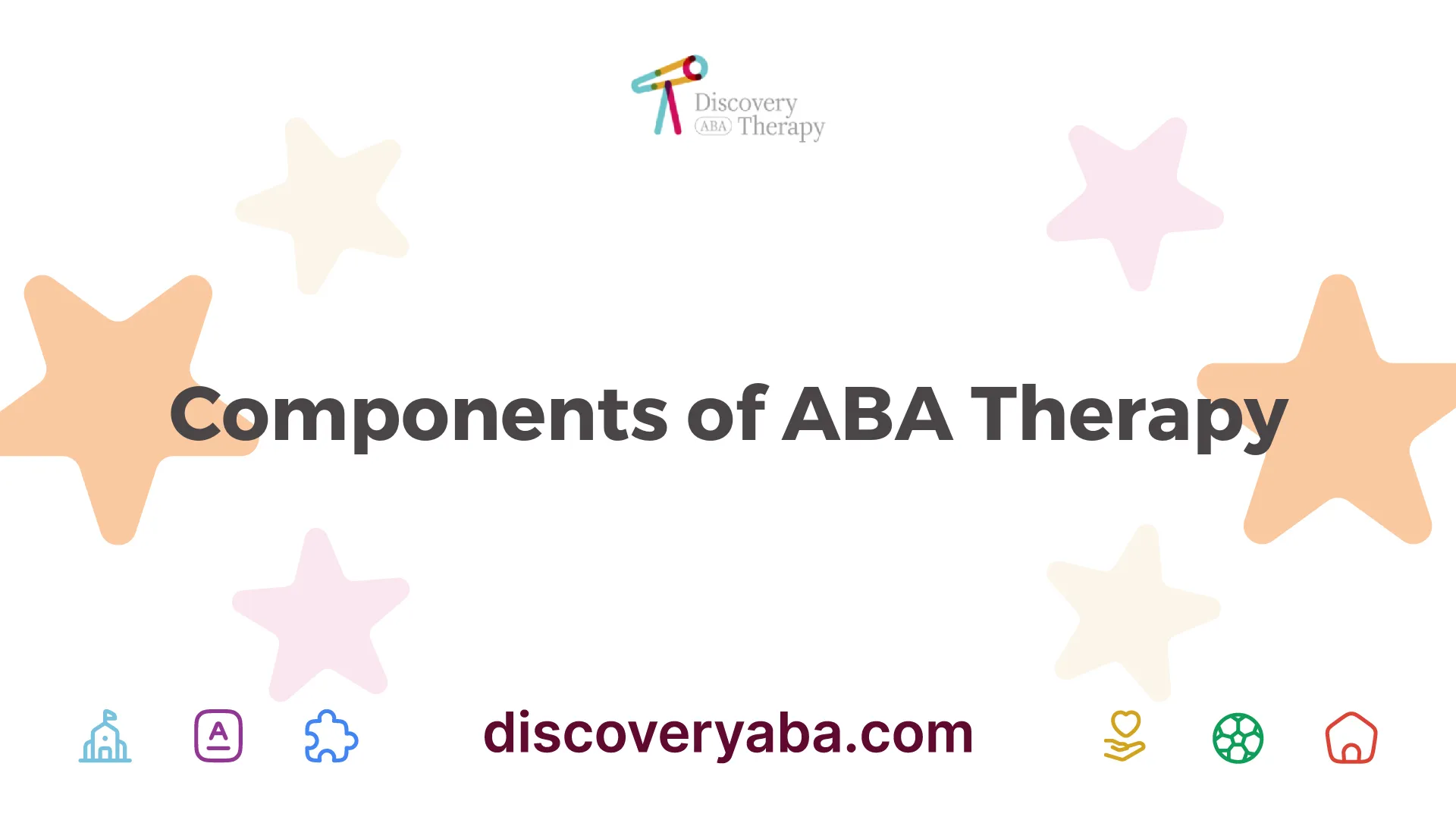ABA Therapy for ADHD and Social Skills
Discover how ABA therapy for ADHD and social skills can improve behavior and boost confidence in children.

Understanding ABA Therapy for ADHD
Basics of ABA Therapy
Applied Behavior Analysis (ABA) therapy is a scientifically validated approach primarily used in treating individuals with autism spectrum disorder (ASD). It has shown significant positive impacts, including enhancing communication and social skills. This treatment methodology focuses on behavior modification by utilizing techniques such as positive reinforcement, structured routines, and active involvement of parents and caregivers.

ABA therapy has been endorsed by reputable organizations, including the American Psychological Association and the American Academy of Child and Adolescent Psychiatry, as an evidence-based treatment. Its robustness lies in empirical research supporting measurable positive outcomes, particularly for children.
With its application extending to Attention Deficit Hyperactivity Disorder (ADHD), ABA therapy aims to assist children in learning new skills while reducing behavioral challenges. Using a rewarding or points system can provide children with a visual way to monitor their progress and achievements as they navigate their treatment journey [2].
Evidence-Based Treatment Approach
ABA therapy is grounded in evidenced-based methodologies, ensuring that its practices are scientifically supported. The approach is directed at recognizing and reinforcing positive behaviors while minimizing negative ones, ultimately leading to improved social skills and behavior management for children with ADHD.
The Centers for Disease Control and Prevention (CDC) have recognized ABA therapy as a promising intervention specifically targeting ADHD behaviors, including impulsivity and hyperactivity. By focusing on structured routines and clear expectations, ABA therapy can significantly enhance overall functioning and quality of life.
For more detailed insights into effective practices and the benefits associated with ABA therapy for ADHD, explore our articles on long-term benefits of aba therapy for adhd and evidence-based aba therapy practices for adhd.
Efficacy of ABA Therapy for ADHD
ABA therapy has been recognized for its effectiveness in addressing various challenges associated with ADHD, particularly in improving social skills and reducing problematic behaviors.
Improving Social Skills
ABA therapy is geared towards enhancing communication and social interaction for individuals diagnosed with ADHD. This approach focuses on teaching specific social skills through structured methods, such as role-playing and reinforcement. Research indicates that children undergoing ABA therapy can significantly improve their ability to engage with peers, understand social cues, and participate in group activities. The techniques help facilitate interactions in various settings, including schools and recreational environments.
The table below summarizes the skills improved through ABA therapy for children with ADHD:
Skill AreaImprovement Rate (%)Communication Skills75Understanding Social Cues70Group Interaction68
This data highlights the substantial positive impact of ABA therapy on social skills, which is crucial for fostering relationships and enhancing peer interactions. For further insights on this topic, refer to evidence-based aba therapy practices for adhd.
Reducing Problematic Behaviors
In addition to enhancing social skills, ABA therapy effectively addresses and reduces problematic behaviors associated with ADHD. These behaviors often include impulsivity and hyperactivity, which can impede learning and social interactions. Through targeted behavior modification strategies, therapists utilize positive reinforcement techniques to encourage desirable behaviors while decreasing instances of disruptive actions.
Studies show that children undergoing ABA therapy exhibit a noticeable decrease in impulsivity, leading to better self-regulation and improved focus. The following table presents common problematic behaviors and their reduction rates attributed to ABA therapy:
Problematic BehaviorReduction Rate (%)Impulsivity60Hyperactivity55Disruptiveness50
The data illustrates the effectiveness of ABA therapy in helping children manage their behaviors, thereby contributing to their overall development and well-being. For more comprehensive insights on applying ABA therapy in real-life scenarios, explore aba therapy for adhd: case studies.
ABA therapy for ADHD and social skills offers substantial benefits, making it a valuable option for supporting children facing these challenges. By implementing targeted strategies, caregivers can foster positive change and enhance the life experiences of those diagnosed with ADHD.

Components of ABA Therapy
ABA therapy incorporates various strategies to address the needs of children with ADHD effectively. Two key components are positive reinforcement techniques and individualized treatment plans.
Positive Reinforcement Techniques
Positive reinforcement is a cornerstone of ABA therapy, particularly for children diagnosed with ADHD. This technique involves acknowledging and rewarding desired behaviors to encourage their recurrence. By breaking down skills into smaller, manageable steps, therapists can effectively improve behavior and social skills in children.
Some common methods of positive reinforcement include:
Reinforcement TypeDescriptionVerbal PraiseOffering verbal compliments and encouragement when a child shows desired behavior.Tangible RewardsProviding small rewards, such as stickers or tokens, that can be exchanged for bigger prizes.Activity RewardsAllowing the child to engage in a favorite activity after demonstrating positive behavior.
These techniques help children with ADHD learn new skills, improve their interactions, and reduce unwanted behaviors.
Individualized Treatment Plans
Individualized treatment plans are essential for the effective application of ABA therapy in children with ADHD. These plans are developed based on a thorough assessment of each child's unique strengths, weaknesses, and behavioral challenges. This approach ensures that the interventions are tailored to meet specific needs and promote effective learning.
Key features of individualized treatment plans include:
ComponentDescriptionBehavioral GoalsSpecific, measurable goals tailored to address the child's distinct challenges.Strategies and ApproachesSelect techniques such as positive reinforcement, structured routines, and visual aids that align with the child's needs.Progress TrackingRegular evaluations and adjustments based on the child's development and responses to interventions.
These tailored strategies significantly contribute to improvements in behavioral and social contexts, providing children with ADHD the necessary support to navigate various social situations effectively.
For further insight into ABA therapy for ADHD, consider exploring the science of ABA therapy for ADHD or evidence-based ABA therapy practices for ADHD to understand how these components function in real-world scenarios.
Tailoring ABA Therapy for ADHD
Individualized approaches in ABA therapy are essential for effectively addressing the unique needs of children with ADHD. By focusing on customized treatment plans, ABA therapy can make significant improvements in both behavioral and social skills.
Customized Approaches
ABA therapy involves creating personalized treatment plans based on a comprehensive assessment of the child's strengths, weaknesses, and specific behavioral challenges. These individualized approaches ensure that the therapy targets the unique profile of each child, addressing areas where they may struggle the most.
Key components of customized ABA therapy include:
Customization AspectDescriptionStrength and Weakness AssessmentIdentifying the child's behavioral strengths and areas needing improvement.Behavioral ChallengesFocusing on specific challenges related to impulsivity, hyperactivity, and social interaction.Personalized GoalsSetting realistic and achievable goals tailored to the child’s abilities.
These personalized plans not only foster improvement in social skills but also facilitate behavior modification through positive reinforcement and structured routines.
Target Areas for Improvement
ABA therapy for ADHD specifically targets areas where children require the most support, enabling them to overcome various challenges. Common target areas include:
Target AreaDescriptionImpulse ControlStrategies that encourage waiting and thinking before acting, reducing impulsive behaviors.Attention and FocusTechniques that enhance the ability to concentrate on tasks for longer periods, minimizing distractions.Social InteractionsTeaching skills for initiating and maintaining conversations, as well as understanding social cues.Emotional RegulationHelping children manage their emotions effectively, reducing frustration and tantrums.
Research highlights the efficacy of ABA therapy in making considerable improvements in these areas, contributing to better overall functioning and quality of life for children with ADHD. In fact, studies indicate that a significant percentage of children exhibit marked improvements after participating in ABA therapy, showcasing its potential as an effective treatment method.
By employing tailored approaches and focusing on key areas for improvement, ABA therapy can provide essential support for children with ADHD, enhancing their social skills and behavioral management. For more detailed insights into specific techniques, check out our articles on ABA therapy techniques for ADHD in kids and building attention skills with ABA therapy for ADHD.
Integrating ABA Therapy with Medication
The integration of ABA therapy with medication offers a more comprehensive approach to managing ADHD. This combination can enhance the overall effectiveness of treatment.
Combined Approach Benefits
Research shows that combining ABA therapy with medication produces the best outcomes for managing ADHD-related challenges. This integrated approach aids in improving social skills and reducing impulsivity in children with ADHD, potentially allowing for lower doses of medication. Furthermore, ABA therapy emphasizes training for parents and caregivers, enabling them to reinforce learned behaviors and skills in everyday settings.
The use of a rewards or points system within ABA therapy creates a visual method for children to monitor their progress. This not only motivates children but also provides a sense of accomplishment as they work on managing their behavior through both therapy and medication.
BenefitDescriptionImproved SkillsEnhanced focus and social skills through combined therapy and medication.Reduced ImpulsivityLower impulsivity levels leading to improved daily functioning.Lower Medication DosagePotential for reduced medication requirements.
Managing Everyday Challenges
A combined approach of ABA therapy and medication effectively addresses everyday challenges faced by children with ADHD. Medication can provide the necessary biochemical support for attention and focus, while ABA therapy provides practical strategies and skills to navigate social situations. This dual strategy ensures that children not only improve their behaviors in therapy but also learn to apply these skills in real-life scenarios.
The active involvement of parents and caregivers in the ABA process reinforces learned behaviors outside of therapy sessions, making everyday interactions more manageable. Through consistent reinforcement at home and school, children can achieve significant progress in managing their symptoms.
The combination of medical intervention and behavioral strategies offers a comprehensive solution to the multifaceted challenges associated with ADHD. For parents looking for a more detailed approach to this integration, resources like the comprehensive guide to ABA therapy for ADHD can be invaluable.
Ensuring Success in ABA Therapy
Ensuring the effectiveness of ABA therapy for ADHD requires a structured approach that emphasizes consistency and active involvement from parents and caregivers.
Consistency in Treatment
Consistency in treatment is crucial for reinforcing the behaviors and skills that are targeted during ABA therapy sessions. The application of strategies learned in therapy should extend to home, school, and community environments. Regular practice allows the individual to generalize these skills across different settings, which is vital for long-term success.
The role of a Board Certified Behavior Analyst (BCBA) is significant here. The BCBA conducts thorough assessments, including interviews with parents, teachers, and caregivers, to develop a personalized treatment plan. This plan aims to enhance the child's strengths, teach appropriate replacement behaviors, and effectively reduce disruptive behaviors [4].
A structured schedule for therapy sessions should be maintained to ensure a steady progression in skill development. Table 1 below showcases effective consistency strategies.
Consistency StrategyDescriptionRegular Therapy SessionsSchedule consistent ABA sessions to provide ongoing support.Home PracticeImplement daily routines that incorporate learned skills from therapy.CollaborationEncourage teamwork between parents, teachers, and therapists to maintain a cohesive approach.Progress TrackingMonitor and record behavior changes and skill improvements regularly to adapt strategies as needed.
Involvement of Parents and Caregivers
The active participation of parents and caregivers significantly boosts the benefits of ABA therapy. When parents engage in the therapeutic process, they can reinforce learned behaviors and skills, creating a supportive environment for the child.
Effective training for parents and caregivers is a notable advantage of ABA therapy. They can learn how to apply the same principles used in therapy at home, further solidifying the child's development. This not only aids in the reinforcement of positive behaviors but also empowers parents with the knowledge needed to manage ADHD-related challenges effectively.
Furthermore, the collaborative effort fosters a sense of continuity and reliability for the child. Parents feeling equipped to handle everyday situations can contribute positively to their child's progress. Engaging parents also facilitates better communication between caregivers and therapists, allowing for tailored approaches that address specific needs.
Overall, consistent treatment and the involvement of parents and caregivers are foundational to maximizing the effectiveness of ABA therapy for ADHD. For additional information on the long-term benefits of this approach, refer to our article on long-term benefits of aba therapy for adhd.
References
[2]:
[3]:
[4]:
[5]:
Does Your Child Have An Autism Diagnosis?
Learn More About How ABA Therapy Can Help
Find More Articles
Contact us
North Carolina, Nevada, Utah, Virginia
New Hampshire, Maine
Arizona, Colorado, Georgia, New Mexico, Oklahoma, Texas
.avif)




































































































